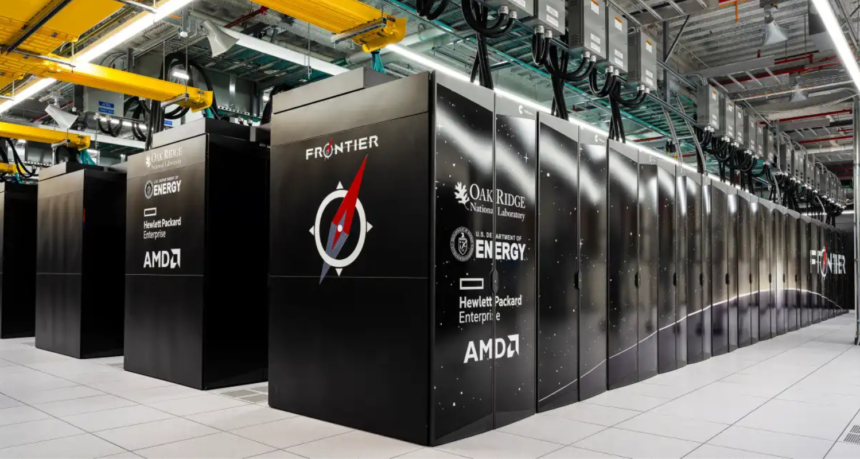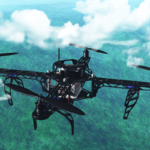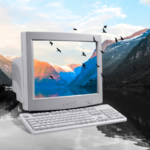Space is a fascinating subject. From Galileo’s telescope to the modern-day James Webb Space Telescope, scientists have used rockets, radiation, robots and supercomputers to uncover space mysteries.
As of today, scientists have used supercomputers in space projects to study the Sun’s surface, understand the universe’s evolution, search for alien life and seek another habitable planet. This article delves into three space projects. These projects needed to finish complex calculations and with the help of supercomputers, the outcomes were commendable. These space simulation projects powered by supercomputers will widen your curiosity about space. Let’s start.
Simulation of falling into a black hole
What are the darkest things in the universe? Yes, Black holes. Their gravitational pull is so immense that even light, with a speed of 3 lakh kilometres per second, can’t escape. It’s an intriguing subject of space and scientists like Stephen Hawking have spent their lifetime uncovering the truths behind them.
NASA revealed the first image of a black hole on 10 April 2019. It was a landmark event for the space research community. Now, after less than half a decade, scientists are using supercomputers in space projects to simulate falling into a black hole.
To visualize what it would be like to fall into a black hole, NASA’s Discover supercomputer has produced cutting-edge simulations. These space simulations help viewers to virtually plunge into the event horizon. The event horizon is the point beyond which nothing can escape the gravitational pull of the black hole.
By using NASA’s Discover supercomputer, Jeremy Schnittman, an astrophysicist at NASA’s Goddard Space Flight Center visualized what would happen if something crossed the black hole’s surface or event horizon. With 0.3% of Discover’s 129,000 processors, he completed the simulation in five days, generating 10 terabytes of data—a task that would have taken decades on a standard laptop.
The visualization shows a supermassive black hole with 4.3 million solar masses, similar to the Milky Way’s. Stellar-mass black holes have stronger tidal forces causing spaghettification. The event horizon spans 16 million miles, 17% of the Earth-Sun distance. An accretion disk and photon rings are visible, marking the black hole’s presence and light orbiting it before escaping.
Evolution of the universe
Image from Josh Borrow, the FLAMINGO team and the Virgo Consortium
It needs a lot of computational power to understand how the universe evolved from the Big Bang. Supercomputers are the only solution. Not only do they make the calculation easier but completes them in record time.
The FLAMINGO (Full-hydro Large-scale structure simulations with All-sky Mapping for the Interpretation of Next Generation Observations) project looks at all components of the universe, from dark matter to galaxies, and and analyzes their interactions based on the laws of physics.
The FLAMINGO project uses the COSMA 8 supercomputer, hosted by the Institute for Computational Cosmology, Durham University. This supercomputer has more than 50 million processor hours and the processing power equivalent to 65,000 CPUs. This supercomputer has aided in simulating the evolution of the universe.
The FLAMINGO simulations have discovered insights into the formation, development and expansion of the cosmic structures over billions of years. By recreating the universe in a virtual environment, scientists can test theories about its evolution and compare the simulations with astronomical observations. This not only helps validate current models but also uncovers new phenomena that might have been previously overlooked.
Sun’s magnetic field simulation
Image from Matti Ahlgren, Aalto University
The Sun, our nearest star, is a dynamic and complex object whose magnetic field plays a very important role in sustaining our solar system. In the worst-case scenario, solar storms or mass ejections of dangerous flares, pose significant risks to Earth, potentially disrupting electrical grids, telecommunications, and and positioning systems. So, understanding the dynamics of the Sun’s magnetic field might help predict space weather and its impact on Earth.
A research team led by Professor Maarit Korpi-Lagg at Aalto University, Finland, used the pre-exascale supercomputer LUMI to study the Sun’s magnetic fields, which are poorly understood but crucial in predicting solar storms.
These simulations provide a better picture of the processes that generate and sustain the Sun’s magnetic field. By modelling the Sun’s interior and surface dynamics, scientists studied the formation of sunspots, solar flares, and and other magnetic phenomena.
This breakthrough could improve early warnings for solar storms, potentially offering additional preparation time. The research highlights the importance of advanced numerical modeling and supercomputing in solving complex astrophysical problems, while also emphasizing the environmental benefits of using energy-efficient GPU-based computing.
Conclusion
Everyday scientists are using supercomputers in space research. They help scientists to find breakthroughs in understanding the cosmos bit by bit. with their computaional and processing power, supercomputers are the new normal in the space research field.
As they are doing now, if NASA and the European Space Agency (ESA) continue to push the boundaries of space exploration, supercomputers have a crucial role to play in decoding the universe’s most intricate mysteries. So, next time you gaze up at the night sky, remember that in some corner of the earth, supercomputers are working tirelessly to expand our understanding of the universe.









